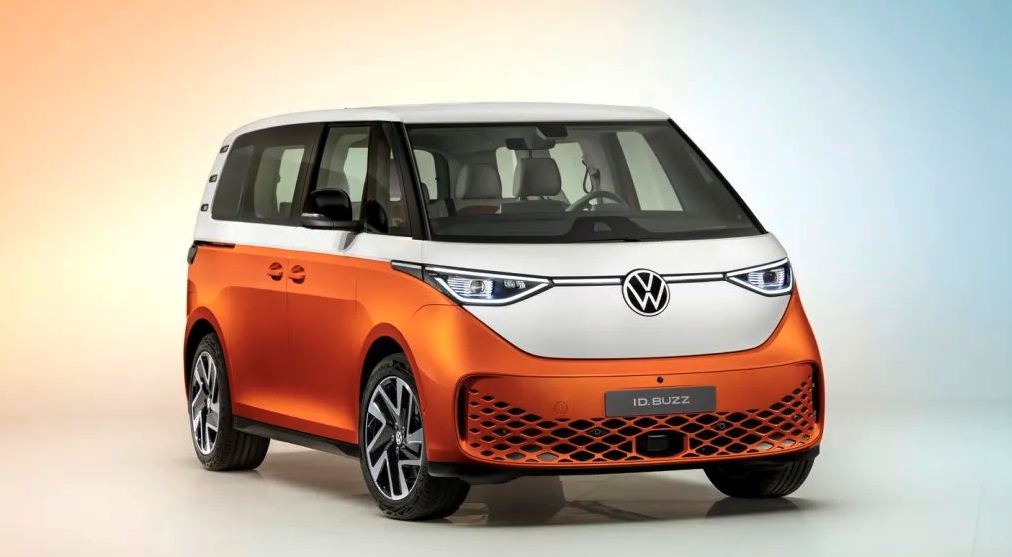Author: DS
At 2:00 am on March 10th, Beijing time, Volkswagen’s new pure electric MPV – ID. Buzz officially debuted. The new car is built on the MEB modular electric drive platform and pays homage to Volkswagen’s classic T1 in retro appearance.
The ID. Buzz will be available in two versions: the MPV version and the ID. Buzz Cargo, a closed cargo van version. The MPV version will offer 5-seat and 6-seat options, while the cargo version is more like a lower-end version of the MPV version, with only front seats and a closed cargo area in the back.
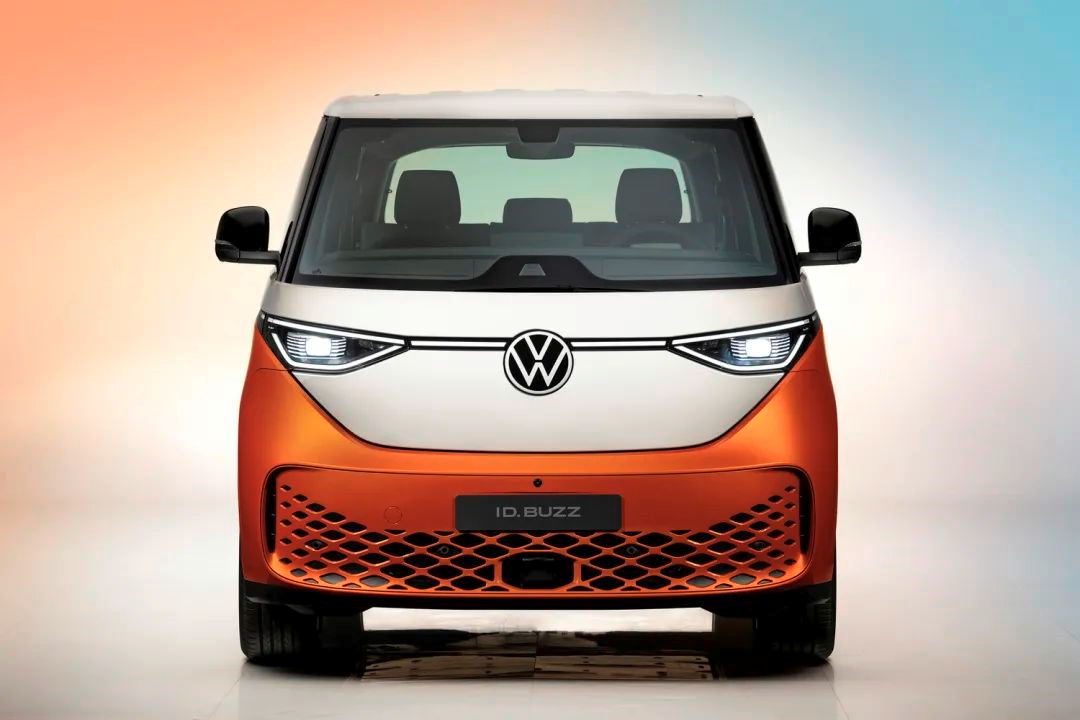
The ID. Buzz’s design inherits the classic design of Volkswagen T1, which was born in 1950 and its descendants continue to this day. The entire front of the car is rounded, just like the T1, with matrix-style headlights on both sides connected by LED daytime running lights, and a large Volkswagen logo in the middle. The entire body is painted in two colors, with high recognition.
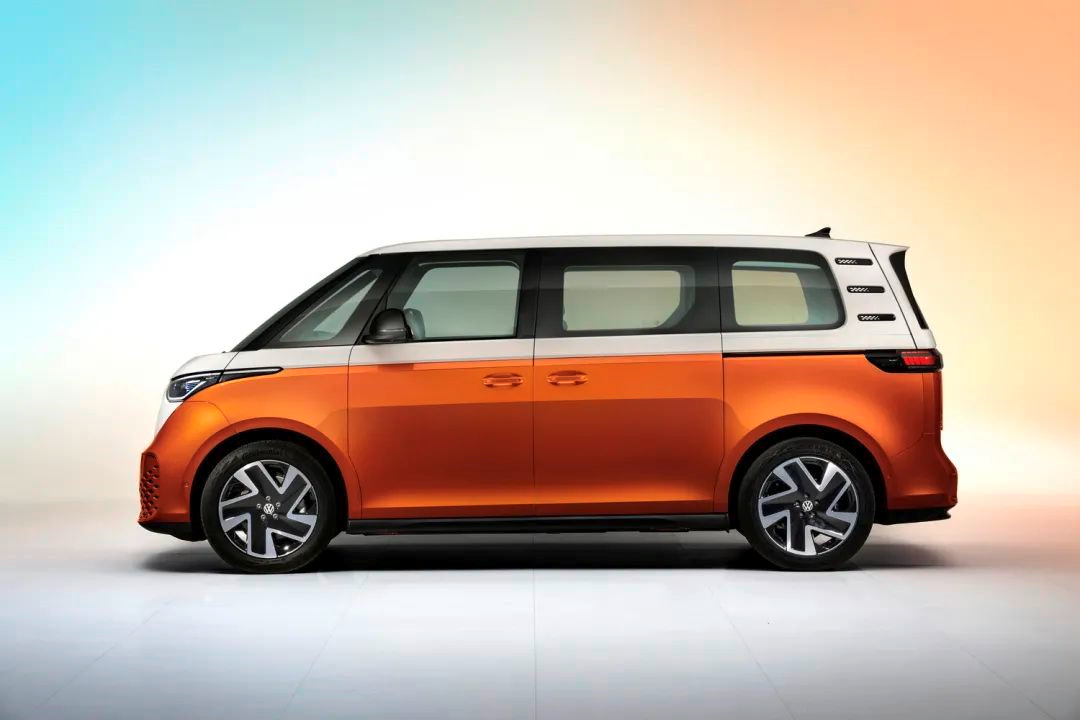
The ID. Buzz has a length, width and height of 4712 mm/1985 mm/1937 mm, and a wheelbase of 2988 mm. The five-spoke petal-shaped wheels over 21 inches are also dual-colored. The A-pillar has a huge triangular window and a floating roof. With various optimized aerodynamic designs, the vehicle’s drag coefficient is only 0.285.

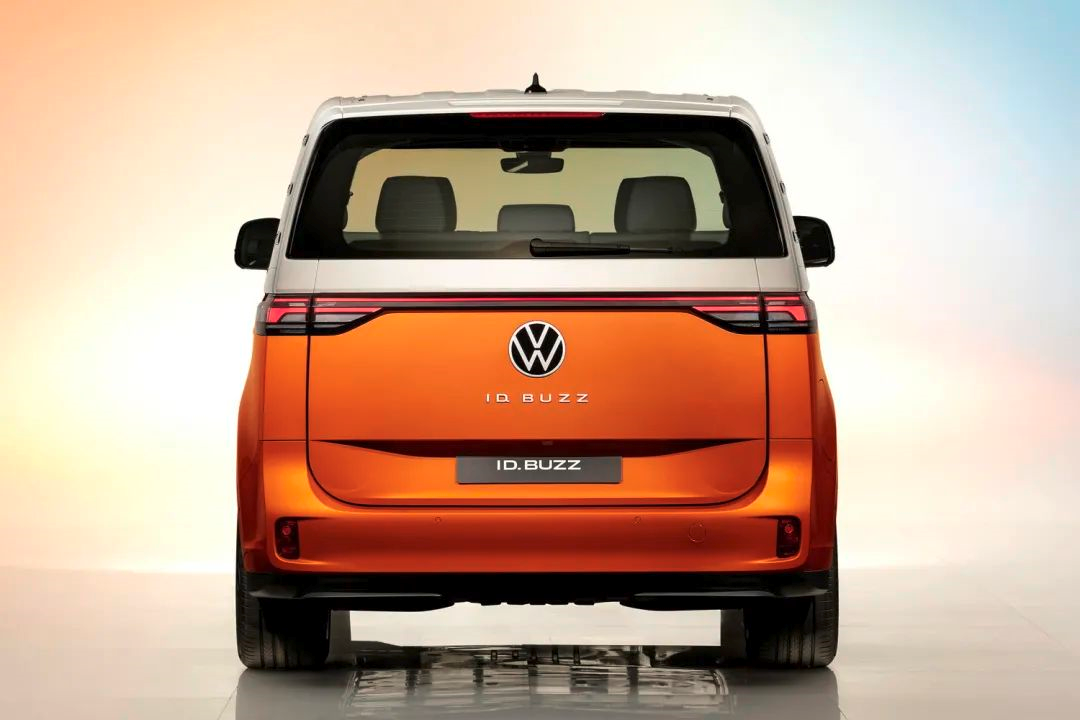
The rear of the car uses through-type LED taillights, which have a strong sense of hierarchy. The entire rear end is more square, forming a strong contrast with the curved front end. There is also a huge illuminated Volkswagen logo and ID. Buzz logo at the rear, with the license plate area below. The charging port is located on the right rear side, which is convenient for charging when parking the car head-out.
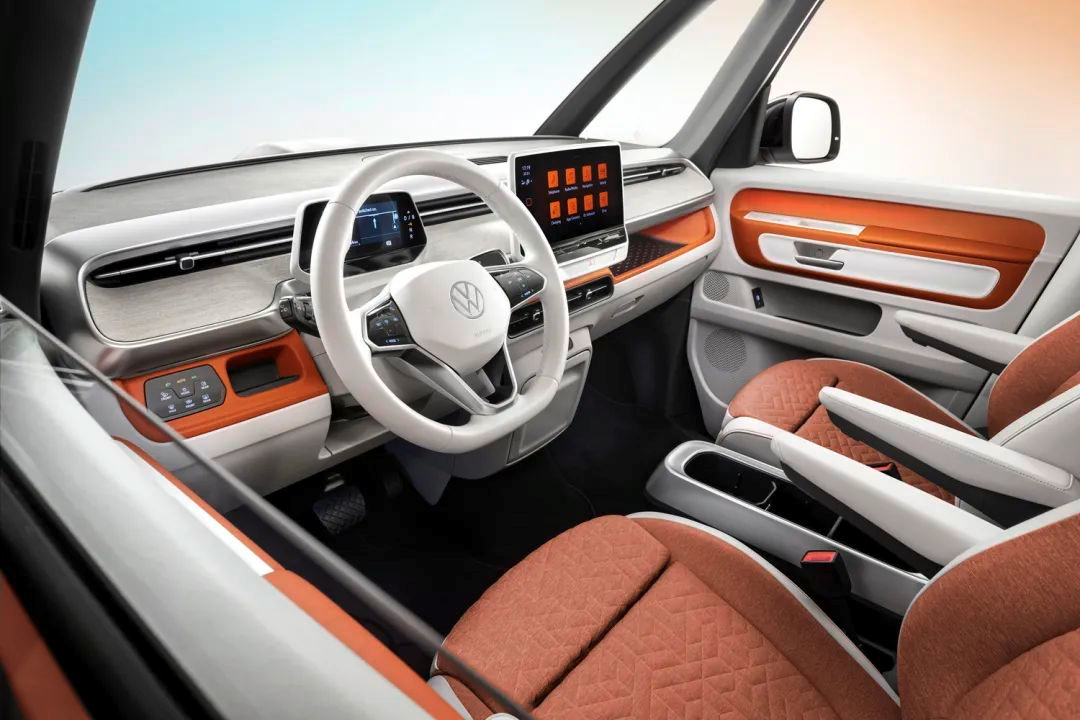 The interior of the Volkswagen ID. family is still recognizable, but with many differences in details. The entire center console has a very layered feel to it, with air vents adopting a through design and a large wood-grain panel under them. The light wood-grain color is very elegant, and below it is a dual-color design that matches the exterior of the car.
The interior of the Volkswagen ID. family is still recognizable, but with many differences in details. The entire center console has a very layered feel to it, with air vents adopting a through design and a large wood-grain panel under them. The light wood-grain color is very elegant, and below it is a dual-color design that matches the exterior of the car.

The steering wheel, fully digital instrument panel, and 12-inch floating center console screen are consistent with other models in the ID. family, but the infotainment system has been upgraded to version 3.0, reportedly improving overall operational experience.

Both sides of the front seats have independent armrests and support electric adjustment and seat memory. The horizontal width of the second row of the five-seater model is quite good, accommodating three people without feeling crowded. The rear seats also provide independent small tables, but this car is not equipped with a sunroof.
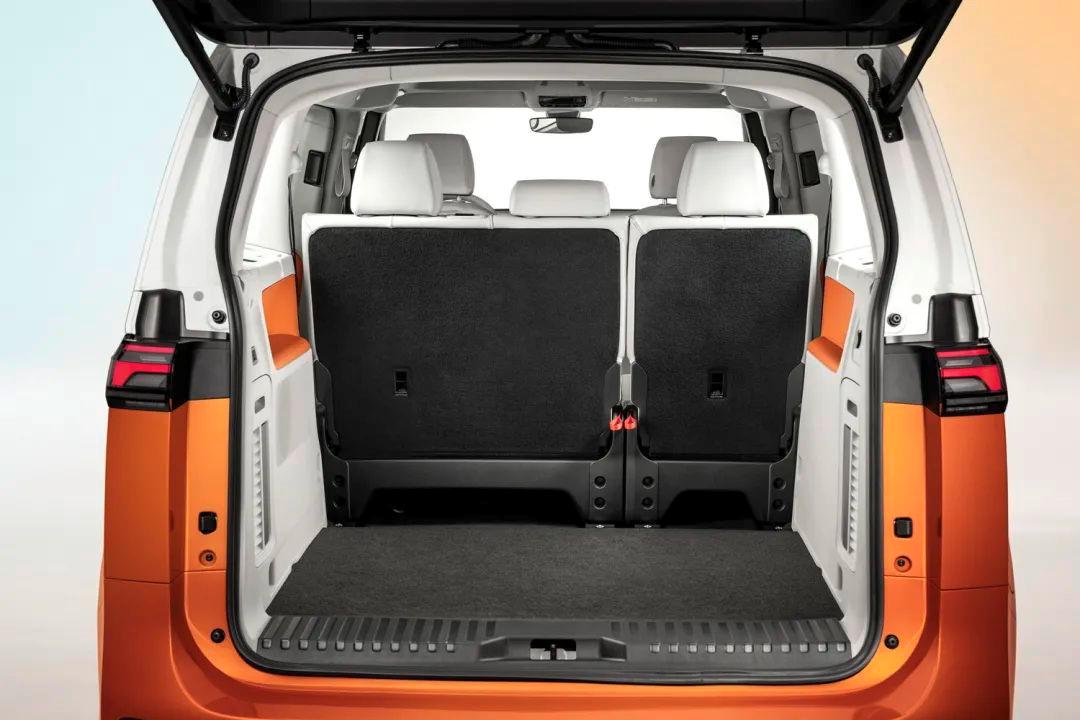
In addition to the electric sliding doors on both sides, the tailgate is also electric. Since the five-seater model only has two rows of seats, the rear has a huge storage space, with a volume of up to 1121 L. The floor of the trunk is very low, so when the rear seats are folded down in a 4/6 configuration, a completely flat space cannot be formed. After the second row of seats are folded down, the luggage compartment capacity can be expanded to 2205L.
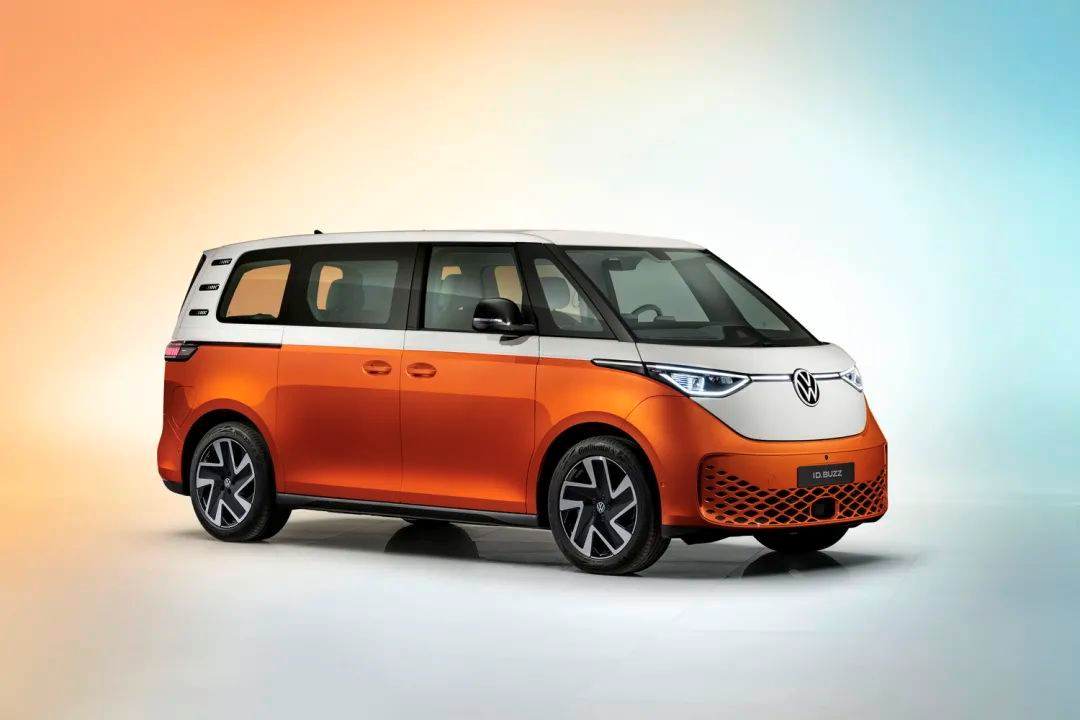
As for the power system, the new car will be equipped with an 82 kWh battery pack (software-locked to 77 kWh), rear-wheel drive, a maximum power output of 150 kW, a peak torque of 310 N·m, and a maximum speed of 145 km/h. Currently, no official data has been released regarding the range.
When using DC fast charging, the ID. Buzz can be charged from 5% to 80% in just 30 minutes. The new car also supports bidirectional charging, which means that excess electricity generated by home solar panels can be stored in the ID. Buzz battery and returned to the home at night.
This article is a translation by ChatGPT of a Chinese report from 42HOW. If you have any questions about it, please email bd@42how.com.
